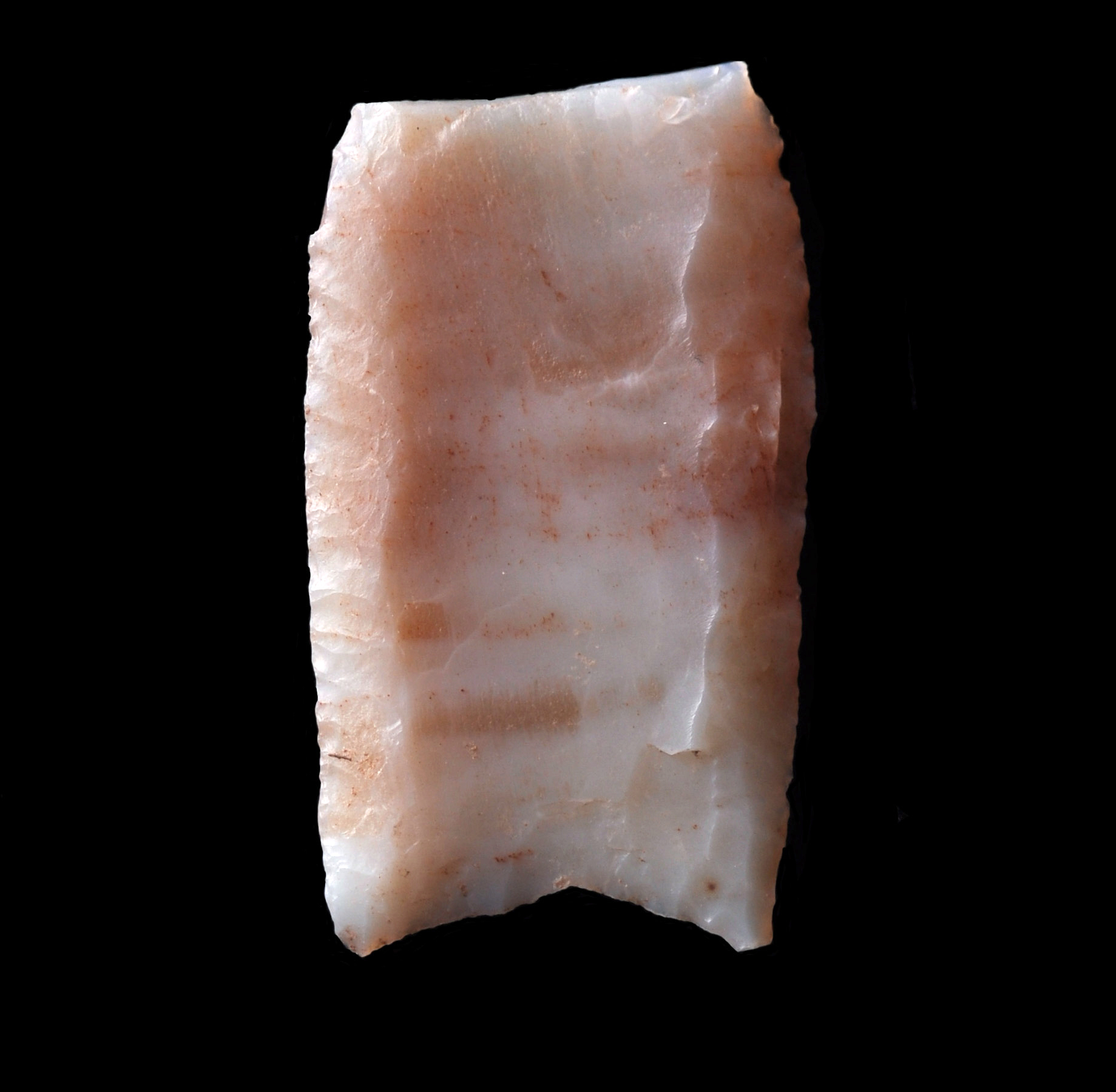Archaeological Culture: Paleoindian, Folsom
Geographical Range: Concentrated on the southwestern and western high plains from Canada to Mexico, reaching as far west as eastern Arizona.
Date Range: 12,900 – 10,200 cal. BP
Size: Average: 35.4 mm long, 21.9 mm wide, and 4.1 mm thick; Range: 20.8-74 mm long, 15.3-28.5 mm wide, and 2.8-6.1 thick (Hunzicker 2005:Table 1).
Shape: Lanceolate, with parallel, gently recurved, or convex margins; symmetrical and highly uniform.
Cross-section: Flat or bi-concave.
Base: Concave and auriculate (eared).
Flaking: Ultra-fine pressure flaking, normally horizontal or oblique.
Fluting: Usually on both sides, with the flutes extending the full length of the point.
Grinding: Evenly across the base and up the lateral margins to about the midpoint.
Materials: Typically high-quality cherts/flints/jaspers, chalcedony, petrified wood, and other stone types.
Comparisons: Generally smaller and more finally made than Clovis points, the latter of which are typically not fluted from end to end. Midland points have the same shape and flaking attributes, but lack flutes, as do other Paleoindian period points.
Compiled from the following sources:
Hunzicker, David A. (2005) Folsom Hafting Technology: An Experimental Archaeological Investigation into the Design, Effectiveness, Efficiency and Interpretation of Prehistoric Weaponry. M.S. thesis, Department of Museum and Field Studies, University of Colorado, Boulder.
Justice, Noel D. (2002) Stone Age Spear and Arrow Points of the Southwestern United States. Indiana University Press, Bloomington.
Morrow, Juliet E. and Toby A. Morrow. (2002) Exploring the Clovis-Gainey-Folsom Continuum: Technological and Morphological Variation in Midwestern Fluted Points. In Folsom Technology and Lifeways, edited by In J. E. Clark and M. B. Collins, pp. 141-xxx. Special Publication No. 4: Lithic Technology. Department of Anthropology, University of Tulsa, Oklahoma.
Compiled by:
Meghann M. Vance, Northern Arizona University Anthropology Laboratories

